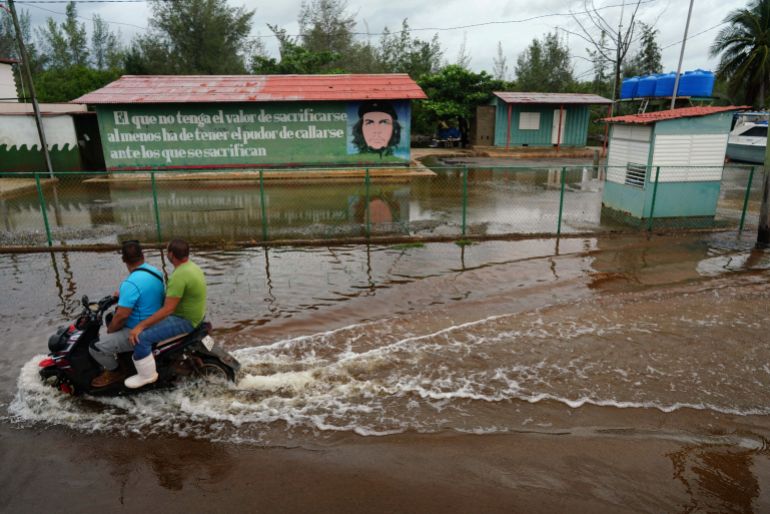Tropical Storm Idalia has strengthened as it passed by the western tip of Cuba, taking aim at the Gulf coast of Florida as forecasters predicted it could become a hurricane “at any time”.
Florida Governor Ron DeSantis on Monday warned that the storm – likely to make landfall in the US state as a major hurricane by Wednesday – could have major impacts along the Gulf of Mexico, telling a news conference that evacuations would take place and residents should prepare.
“The combination of a dangerous storm surge and the tide will cause normally dry areas near the coast to be flooded by rising waters moving inland from the shoreline,” the National Hurricane Center (NHC) said in an 11pm (03:00 GMT) update.
“There is a danger of life-threatening storm surge inundation along portions of the Florida Gulf Coast,” it said in a statement on social media.
US President Joe Biden spoke with DeSantis earlier Monday and approved an emergency declaration for the state, promising it would have his full support, a White House spokesperson said.
Various NHC warnings have been put in place in Florida, Georgia and South Carolina as heated Gulf of Mexico waters turbocharge the storm.
The NHC also expected hurricane and tropical storm conditions in parts of western Cuba through Tuesday morning.
It predicted the highest storm surges north of Tampa Bay, a metropolitan region with about 3.2 million residents, saying that “inundation of between eight to 12 feet [2.4 to 3.7 metres] above ground level is expected.”
Flash and urban flooding may hit other parts of Florida, including the state’s panhandle region, and southern Georgia into Wednesday, the NHC said. Flooding could reach parts of South Carolina Wednesday into Thursday.
The US Federal Emergency Management Agency (FEMA) is already preparing for the storm’s impact, including by deploying some of its staff, according to the White House.

Cuban authorities declared a hurricane alert for the provinces of Pinar del Rio and Artemisa as well as Isla de la Juventud, an island.
Thousands of Cubans evacuated or fled ahead of the storm, authorities and state media said.
After passing Cuba the storm will move out over the Gulf, which scientists say is experiencing a “marine heat wave” – energising Idalia’s winds as it races towards Florida.
The storm “will be moving over waters near 31 Celsius [88 degrees Fahrenheit],” the NHC said.
Heat is one factor that powers hurricanes and “rapid intensification is becoming increasingly likely before landfall… Idalia should keep strengthening up to landfall” as a major hurricane, it warned.
Major hurricanes are usually Category 3 and up on the five-level Saffir-Simpson scale – storms that the NHC says can cause “devastating” and “catastrophic” damage.
Cuban state media said about 8,000 people had left their homes to seek shelter with family or friends in Pinar del Rio, the same province walloped last September by Hurricane Ian, which killed at least two people and left millions without electricity.
Idalia was already buffeting parts of southeastern Mexico with wind and rain earlier in the day Monday.
In the state of Quintana Roo, home to Cancun and other coastal tourist resorts, Idalia dumped rain and put a damper on one of the last weekends of summer vacation.
Scientists have warned that storms are becoming more powerful as the world gets warmer due to climate change.
In 2022, Florida was also hit by Hurricane Ian, which killed almost 150 people and caused extensive damage.
It wiped out entire neighbourhoods, causing more than $100bn worth of damage – by far the world’s most costly weather disaster of the year.
Source : AL JAZEERA
















